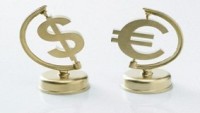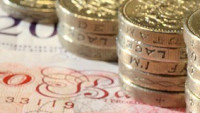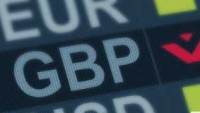 European markets started the new week very much on the back foot yesterday, although we did see a late recovery off the lows, after crude oil prices retreated from their intraday highs.
European markets started the new week very much on the back foot yesterday, although we did see a late recovery off the lows, after crude oil prices retreated from their intraday highs.
The late afternoon recovery wasn’t enough to prevent the likes of the DAX and Euro Stoxx 50 from closing in bear market territory, more than 20% below their recent record highs.
Suffice to say yesterday’s late recovery turned out to be temporary, as US markets which also rebounded initially on reports that Russia had adopted a slightly softer tone on its demands for a ceasefire soon rolled over again, after it became quickly apparent that any imminent agreement was likely to be wishful thinking.
In reality, Russia will have to work very hard to be sincere about anything it says given the way it has behaved over humanitarian corridors in the past few days. Throughout the crisis it has lied consistently about its intentions, which means it’s going to be hard to take anything it says at face value.
Crude oil prices still finished the day higher with Brent crude closing above $120 a barrel for the first time in almost 10 years, although that was still well short of its intraday highs at $139 a barrel, as talk of a full Russian oil ban did the rounds yesterday. This threat of even tighter sanctions on Russian energy imports is likely to see further upward pressure on prices in the weeks ahead, with the very real prospect we could well see prices revisit the levels we saw in September 2008 when prices hit $147.50.
Yesterday also saw further gains for wheat prices which closed at a new record high of $12.94 a bushel.
It is these fears over rising inflation that is causing US yields to push higher, despite concerns about the growth outlook. It’s been notable that despite the move into US 10-year bonds at the end of last week, which prompted a sharp fall in 10-year yields, this same pattern hasn’t been reflected in US 2-year yields, which have remained steady.
This flattening of the yield curve appears to suggest that US investors are worried about higher prices in the short term, which in turn could cause an economic slowdown.
US markets saw more big falls yesterday with the S&P500 posting its worst daily loss since October 2020, and its weakest close since June last year. The Nasdaq 100 also got clobbered with a similarly negative day, although both remain above their January lows.
The negative sentiment from yesterday looks set to translate into further weakness for markets in Europe later this morning, as Crude oil and natural gas prices continue to move higher, as Russia hints it may limit energy flows through Nordstream One.
Elsewhere Nickel prices have been going parabolic in Asia, rising from $80k to $100k a tonne in less than an hour to new record highs this morning. Nickel, which is used in the production of electric vehicle batteries, rose 90% yesterday, and has doubled again today, with the volatility being seen in commodity markets continuing to exert downward pressure on equity markets in the process, as Asia markets once again fall to new multi month lows.
EUR/USD – tested trend line support at 1.0800, from the 2016 lows at 1.0340. This needs to hold to see a rebound back towards the 1.1000 area. A fall below the 1.0780 area has the potential to open a test of the 1.0650 area.
GBP/USD – yesterday’s fall below the December lows at 1.3160, opens the prospect of a move towards the 1.2850 level. Resistance now comes in at 1.3180, and behind that at the 1.3450 area.
EUR/GBP – dropped to the 0.8200 area before rebounding, with resistance at the 0.8320 area, and then behind that at 0.8420. A fall below 0.8200 opens a test of the 0.8100 area.
USD/JPY – currently in a range between resistance at the 115.80 area and the highs last week, and support in and around the 114.50 area. A break below support at the 114.40/50 area opens up the risk of a move towards 113.80.













